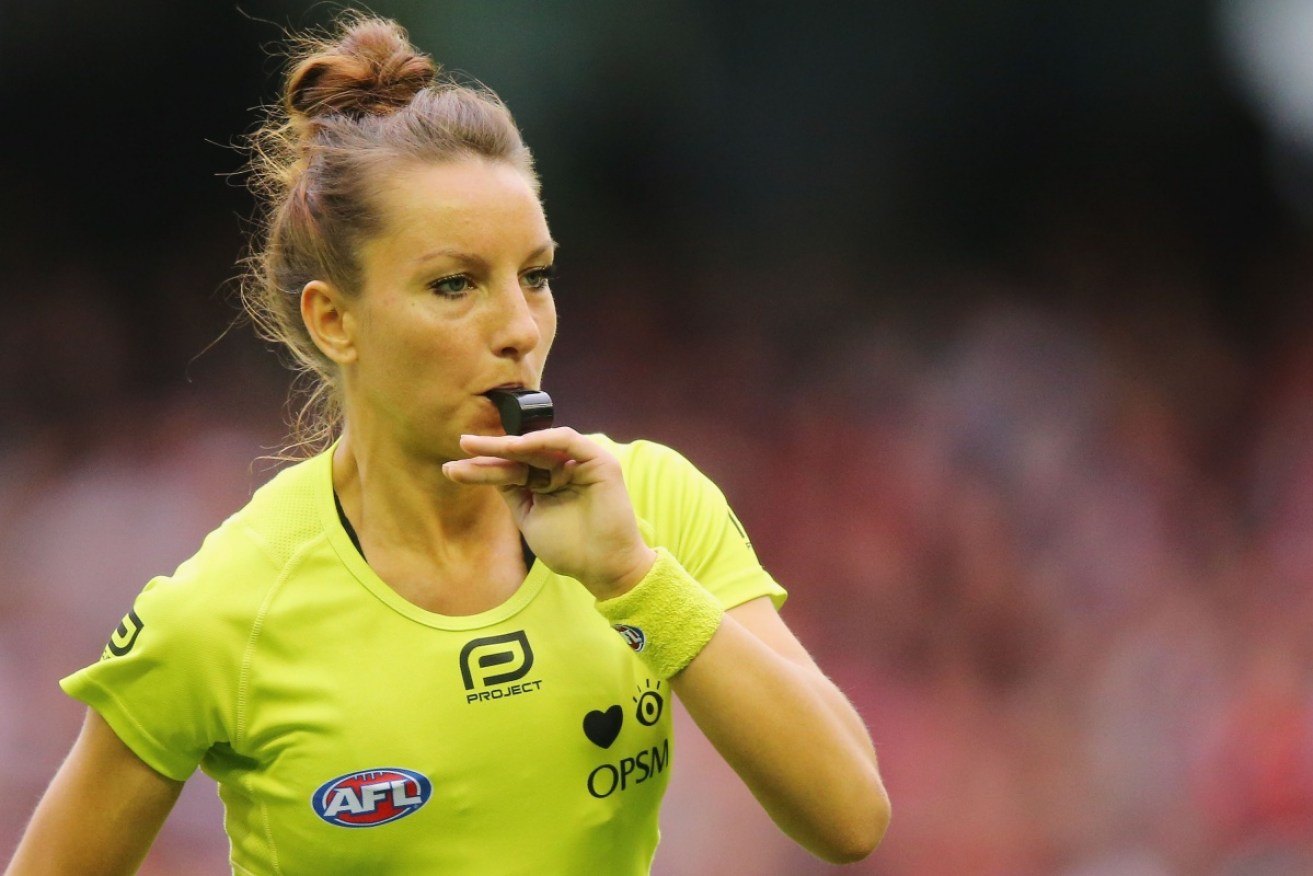The simple solution to the AFL’s big problem that everyone has missed


An umpiring tweak might make all the difference. Photo: Getty
I’m really torn about this whole debate on rule changes.
After Tuesday’s news that one of the likely recommendations of the AFL’s new Competition Committee is a 6-6-6 formation at centre bounces, I did some thinking.
Better still, I thought I would try to demonstrate visually what I’m talking about.
To that end, I got on YouTube and randomly selected a home and away game from the mid-’80s, this one a Collingwood v Essendon clash at Victoria Park in Round 15 of 1985.
It’s a 10-minute clip. Watch it and see what you think. If you have the patience, I think two things stand out, and to me they’re both pivotal to the current discussion.
One is the almost non-stop nature of the action. Far, far fewer stoppages, plenty of space. And players taking the game on.
There’s not a heap of scoring, but it’s still exciting, fast and in my view, the sort of football most people would like to watch.
To me, that’s an argument for some form of rule change in a game which in recent years is a lot more congested and as a result, slower overall.
We know the indicators like contested possession, tackles and stoppages continue to rise or stay around the same mark. They’re not being reversed.
I just don’t think natural evolution is going to take care of the problem.
But there’s also two important moments in the clip which to me demonstrate the potential problem with rushing through rules on “started positions”, “designated areas”, “zones”, whatever you like to call them. Or, for that matter, extended goalsquares.
My problem isn’t with the philosophy, but I think the fact that there are simpler, less dramatic changes which could be made to current umpiring guidelines which could actually have a bigger impact on play than the zones being discussed, which, were they to be implemented only at centre bounces, would still occupy only a fraction of game time.
So, those two moments? Blink and you’ll miss them, but watch particularly for two ball-ups which are called at about the 4.50 mark in the clip, and then again at 6.05.
In the first incident, a ground ball is converged upon by just two players, Essendon’s Alan Ezard and Collingwood’s Gordon Sumner (no, not Sting from The Police).
They wrestle for the ball for no more than one second before umpire Denis Rich blows the whistle, runs in and bounces the ball to restart play. Three other players circling don’t even have time to enter the scramble before the whistle blows, play starts again, and the ball is cleared.
In the second incident, Essendon’s Tim Watson is lucky not to be pinged for holding the ball, but as the ball hits the deck, he manages to dive on it at the same time as Collingwood’s Tony Shaw.

Would the game be better if umpires called for ball-ups quicker? Photo: Getty
It’s another stalemate, and the ball doesn’t come free, but again, within no more than one second, umpire Ian Robinson calls for a ball-up well before any other players can encroach into the area, the game restarts, and we’re off and away again.
Contrast those two moments with any disputed ball in an AFL game now. A two-man scramble quickly becomes, three, four, half-a-dozen as umpires allow play to continue, the throng often getting so large it really does resemble a rugby union rolling maul.
There is the beginning of your congestion. And the continued improvement in players’ pressure and tackling skills is such that once it develops, it’s proving even harder to break free from.
The “bees around the honeypot” disputed ball stuff has been going on so long now we’ve become conditioned to and not shocked by the spectacle of it. But contrast it with this footage from 1985 and the difference is stark, to say the least.
My point here is this. If that cluster of players around the ball is the start of the problem, is there a more effective way of nipping it in the bud than preventing them converging at the contest in the first place?
I reckon I first had this debate with then umpires’ director Jeff Gieschen around 2005-06. His contention (and I’m not rubbishing him for it) was that umpires’ felt that by allowing play to continue, there was a reasonable chance the ball would spill free, and that was preferable to the chance of a secondary stoppage.
In short, there was a belief that blowing the whistle for more stoppages would cause more congestion and take more time than allowing the ball to come free naturally.
Maybe that was the case in 2005. But it’s certainly not now. Imagine if those 1985 standards of when to call for a ball-up were applied in 2018. Look at how quickly umpires Rich and Robinson blow the whistle and restart the game. Would that not have an obvious impact on keeping the game open and keeping it flowing? Surely it would.
It’s such a simple suggestion and yet we really don’t seem to have discussed it much, if at all.
There has been talk about the time umpires take to throw the ball up, complicated by indicating the direction in which they’re heading once they do throw it up, and of course the silly (in my view) nomination of ruckmen for each contest. Clearly, that has to be dispensed with.

Packs like this are all too common. Photo: Getty
But this is more than that. It’s not just about how long it takes once the ball-up has been called for, it’s about for how long play should unfold before the ball-up is called. And I sincerely believe were that to be reduced dramatically, back to the standards of the mid-80s, we would be a long way towards improving the game’s aesthetic.
I’ve always been sceptical about the impact further reductions of the interchange cap would have in opening the game up. And this latest idea of starting points might be OK, but I’m also pretty confident that if it is only at centre bounces, the impact will be minimal, if any.
I defy anyone to watch that short 10-minute sample of a run-of-the-mill game from 1985 and conclude it isn’t a lot more entertaining as a spectacle than a lot of the football we see now. It’s how we get there that obviously is the issue.
And if we can a long way towards that goal with a very simple tweak not even of rules, but merely one umpiring interpretation, surely that is preferable to wholesale, fundamental changes to the rules.
In summary, I’m saying yes, we do need to do something to get football back to a better place, but no, we don’t need to go as far as we appear to be, particularly without sufficient length trials.
Can’t we at least give this a go first? It could well be the solution that pleases both sides of the current debate, freeing the game up, but at the same time not tampering with its fundamentals. Surely that’s worth a try?
Read more from Rohan Connolly, formerly a senior football writer for Fairfax, at Footyology, or watch Footyology TV here.








